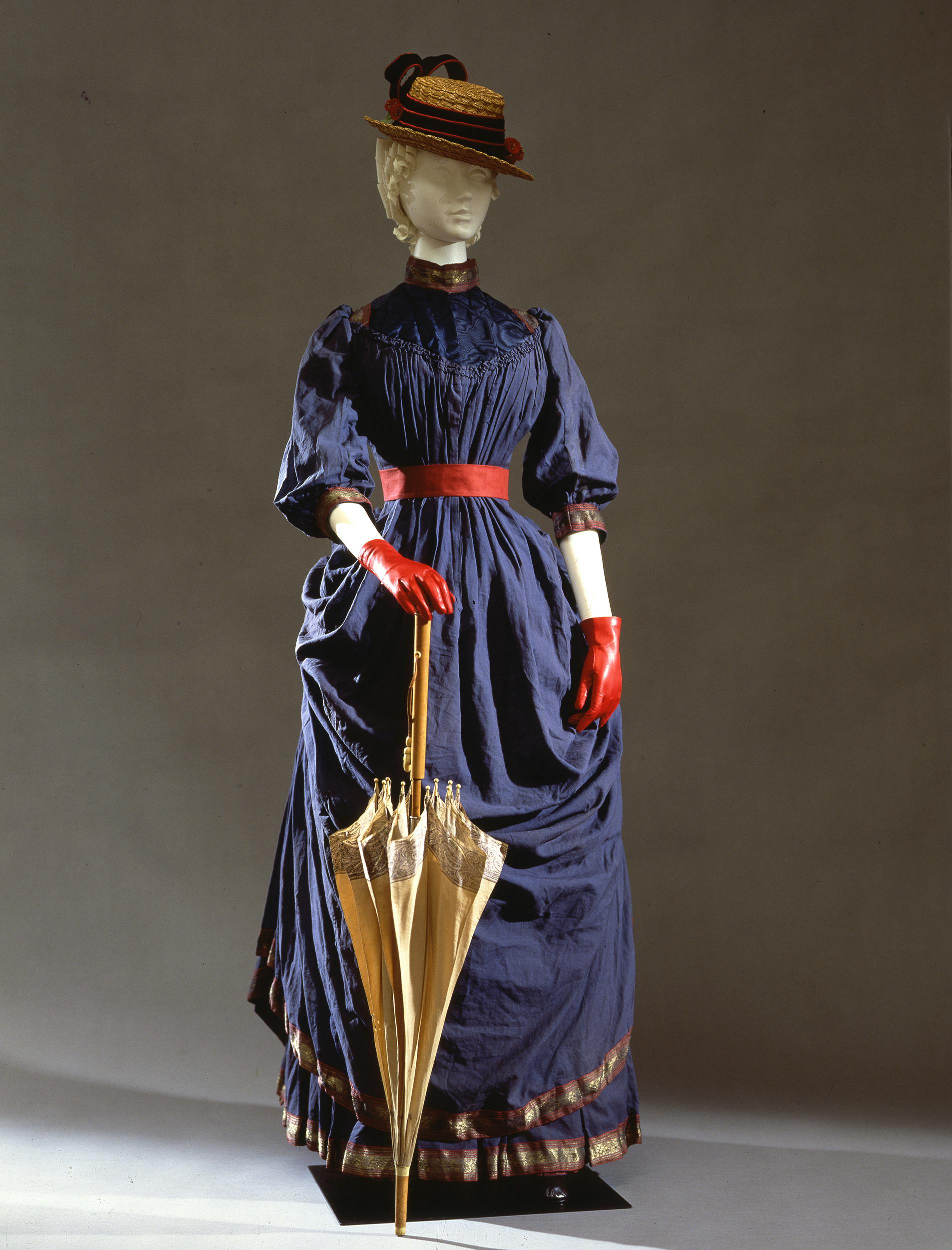Holiday dress
French production (label “M.me Callot / Paris”)
This holiday dress presumably came from a wedding trousseau made for a Parisian woman who married in 1884. On the occasion of the wedding, among wealthy classes, the common practice for the bride was to have a set of dresses to start her new life, to be worn on her honeymoon and then in her role as a novice hostess.
This dress, which was certainly intended for daytime use, as confirmed by the high collar that completely hides the neckline, was also presumably intended for stays in holiday resorts. This use is suggested by the choice of plain cotton fabric, a fabric suitable for informal summer occasions, and by its blue and red colours, which according to the fashion of the second half of the 19th century were often associated to beachwear or sport activities. The dress is made of cotton muslin, embellished at the hems, cuffs and neck by a gold and red braid, and at the yoke by a blue marbled silk insert. The design recalls the fashion styles of the mid-1880s, from the stiff strap collar, to the ruffled bodice, up to the skirt formed by two overlapping layers of which the upper one is draped asymmetrically. The cul de Paris, namely a silhouette used to create the characteristic volume, was present at the back, under the skirt and petticoat.
In order to stay protected from the sun and ensure that the skin could remain untouched, thus maintaining the paleness required by the ideal of beauty of the time, two accessories were indispensable to leave the house in a dress like this: a hat, which according fashion should have been small but loaded with decorations, and a parasol, usually light-coloured and made of cotton for the summer months and the holiday season. Also the gloves were indispensable, even during warmer months.
The label can be traced back to Marie Callot-Gerber, who, together with her three sisters, Marthe, Joséphine, and Régina, founded the fashion house ”Callot Soeurs” (Callot sisters) in 1895, which would become one of the most important in the fashion scene of the first decades of the 20th century. To the same owner also belonged the wedding dress made by Maison Worth, the most famous Parisian maison of the second half of the 19th century.
Donated by Centro di Firenze per la Moda Italiana.
Hat, belt and gloves are not original.
La Galleria del Costume/1, Centro Di, Firenze, 1983, pp 76-77
